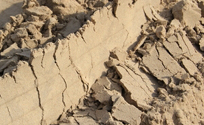Professional Watershaping
In the last video I offered here, we were working on a site with access so limited that only mini-Bobcats were able to negotiate the passageway from the backyard to the street. That space was positively luxurious compared to the one highlighted in my
For a long time now, I’ve specialized in working with upscale clients along the coast of Orange County, Calif., a place where access is often restricted and where construction can honestly be described as challenging – lots of hilltop work above steep, fragile slopes. My history
‘Why isn’t the appropriate use of water a defining, central component in the education of landscape architects?’ That’s how Mark Holden began a series of articles called “Future Class” in the March 2007 edition of WaterShapes. He continued: ‘That question has rattled around in my head for a long, long time, basically because it has no adequate or satisfactory
When I started my career more than 20 years ago, habit and standards dictated that swimming pool plaster should be white. By that time, happily, a handful of suppliers had begun offering colored aggregates, and then products including PebbleTec began expanding the palette to a point where about a dozen colors were available, give or take a few. These were shades of blue, mostly, ranging through to grays and darker grays. Then, about ten years ago,
In his year-end column five years ago, Brian Van Bower began by addressing the need every businessperson has to step back periodically and evaluate ‘where you fit within your corner of the industry.’ ‘To me,’ he continued, ‘understanding the Big Picture is a practical necessity, because failing to do so means I’m almost certain to miss opportunities and, just as bad, will not be prepared for conditions in the market that influence
When people talk about pools these days and have something ambitious in mind, many of the conversations focus on vanishing edges, perimeter overflows, infinity edges, knife edges, wet decks, disappearing edges and whatever other terms one might use in describing water-in-transit effects. In lots of these cases, if not most, these discussions are misdirected: Just because
Through the years, I’ve seen plentiful discussions of the fact that geotechnical (or soils) reports are required for proper watershape engineering. And it’s not just about complex vanishing-edge or perimeter-overflow pools: It’s about all swimming pools, spas, fountains and waterfeatures. Let’s consider that case closed. But who exactly should
Five years back, columnist Brian Van Bower wrote passionately about the opportunities he found in attending trade shows. At that time, the industry was doing very, very well, and it’s likely his plea had a tough time finding receptive ears. Is it possible that
It shouldn’t be too surprising that, as a designer and builder who cares about quality and craftsmanship, I’ve spent some time thinking about bidding and ethics. As I see it, bidding against other contractors to win the opportunity to install a project is a fair and worthy exercise if the project’s specifications are
In April 2001, as part of his “Details” column in WaterShapes, David Tisherman argued forcefully for constant, competent on-site supervision of watershaping projects. In his article, entitled “Super Vision,” he noted, “Call it quality control, attention to detail or perfectionism: There’s no




















